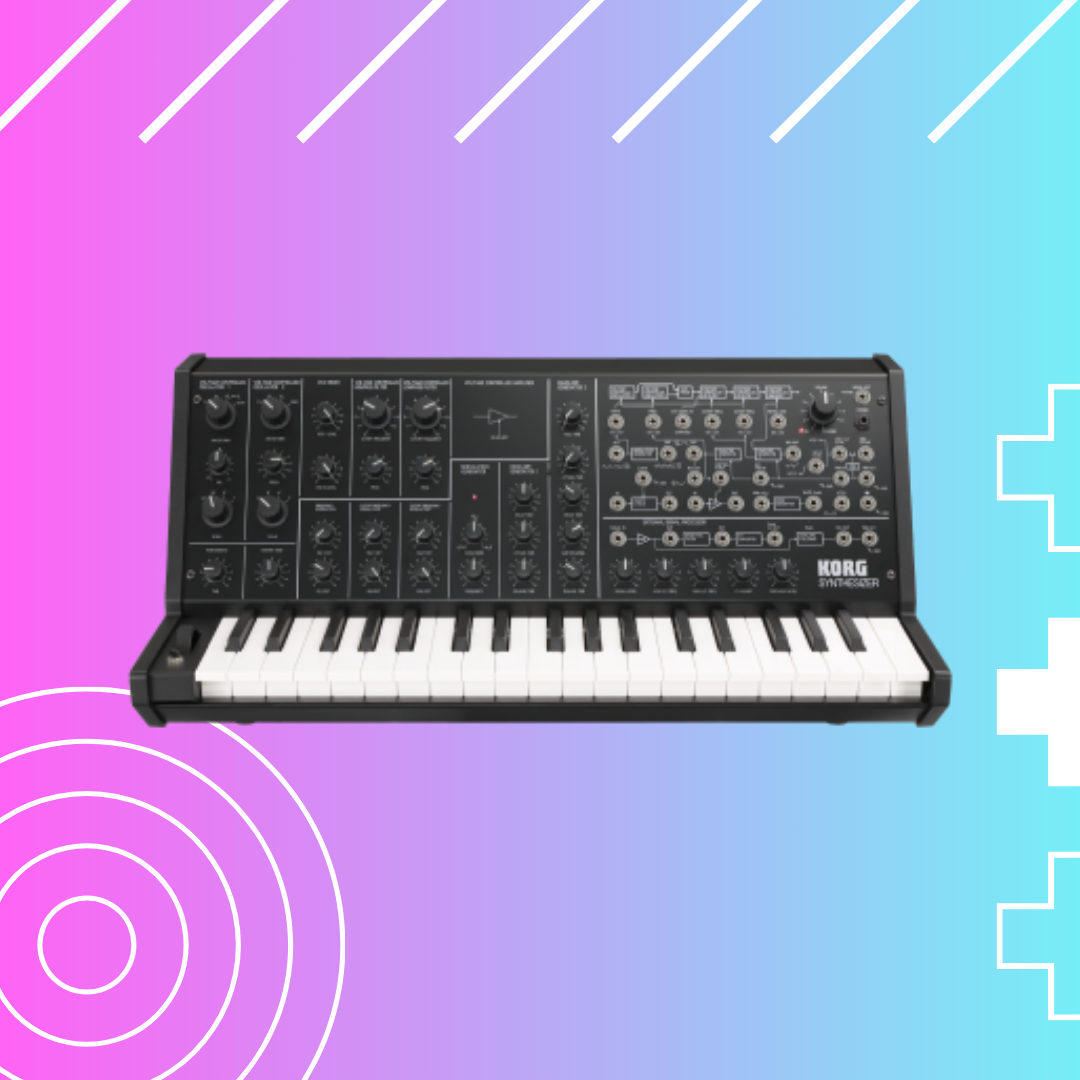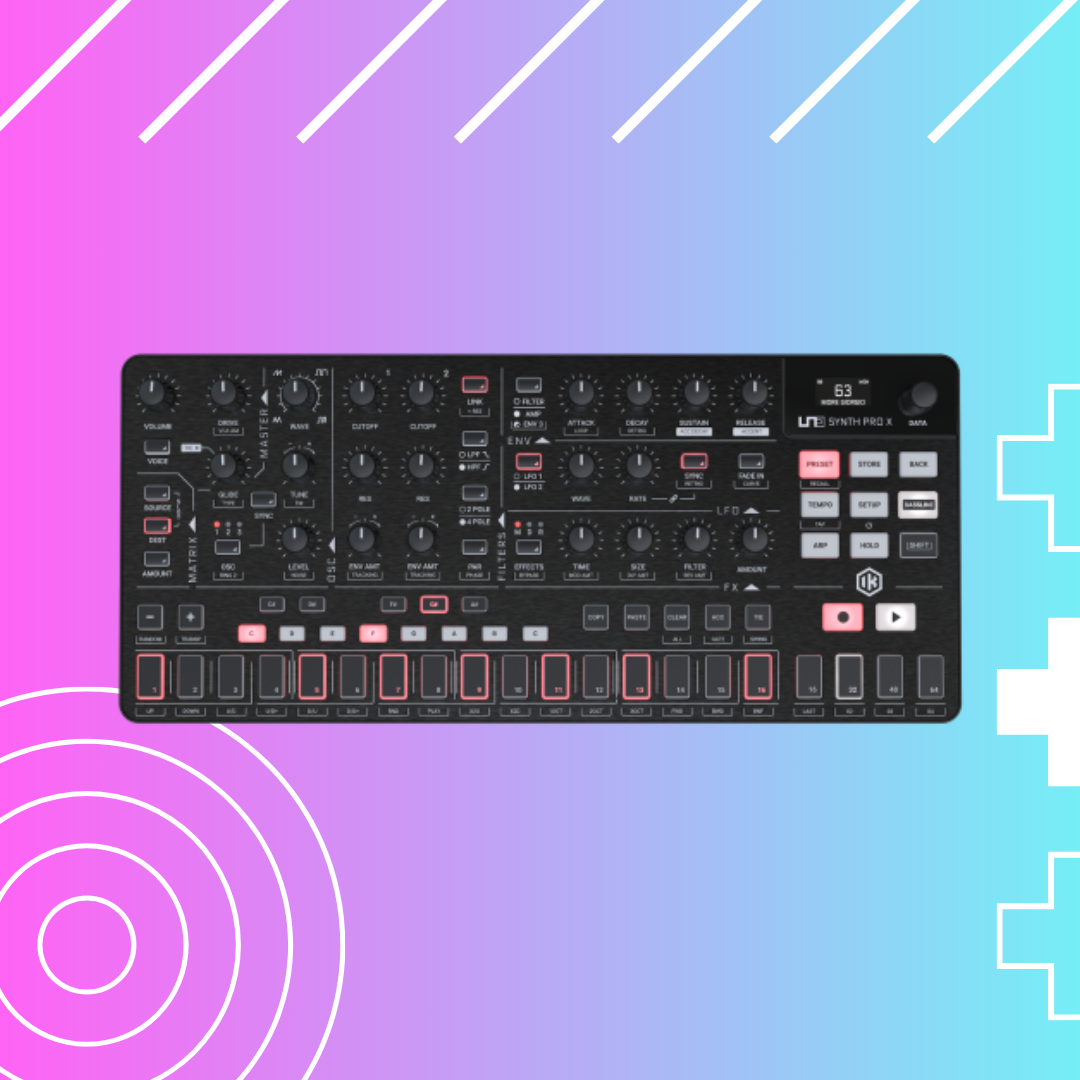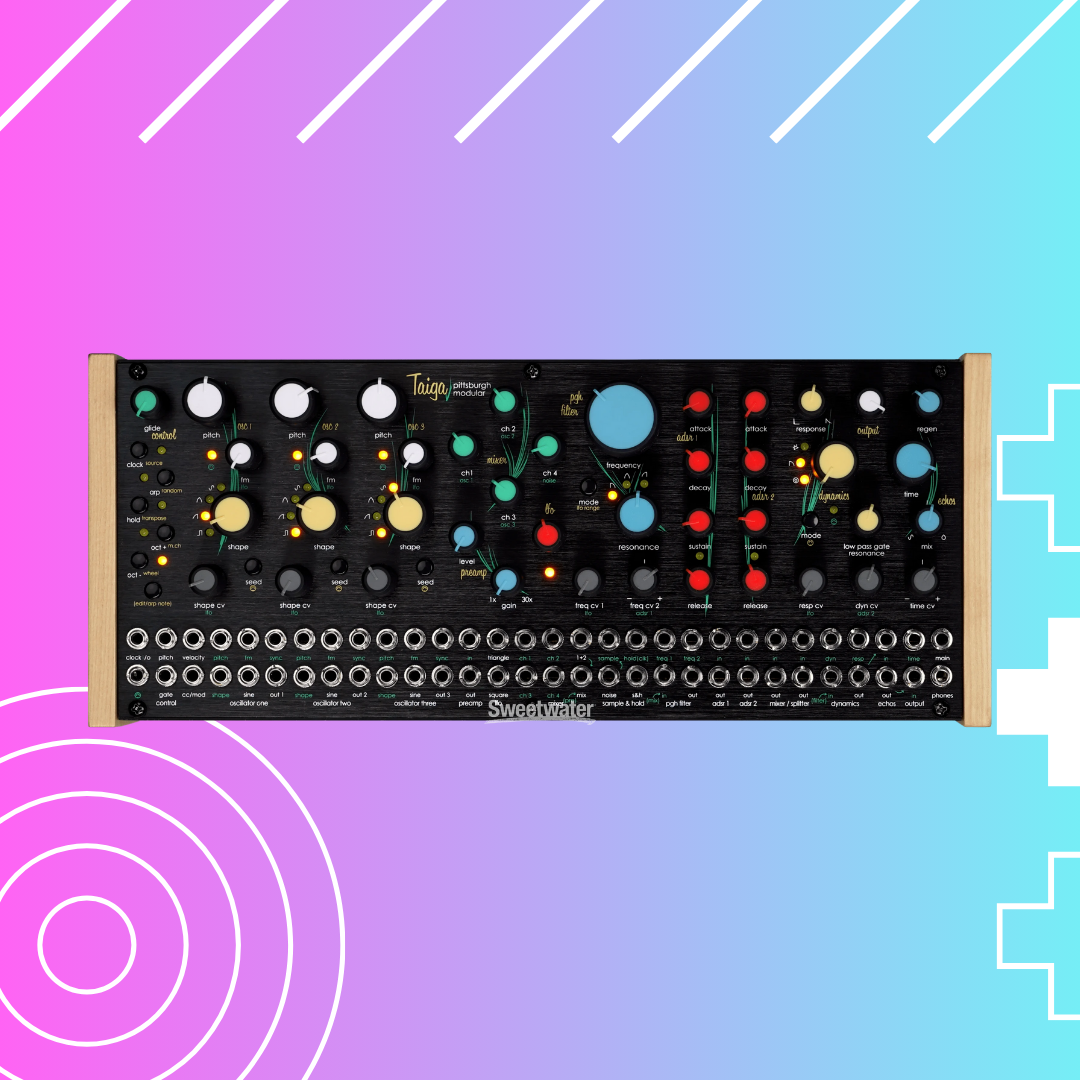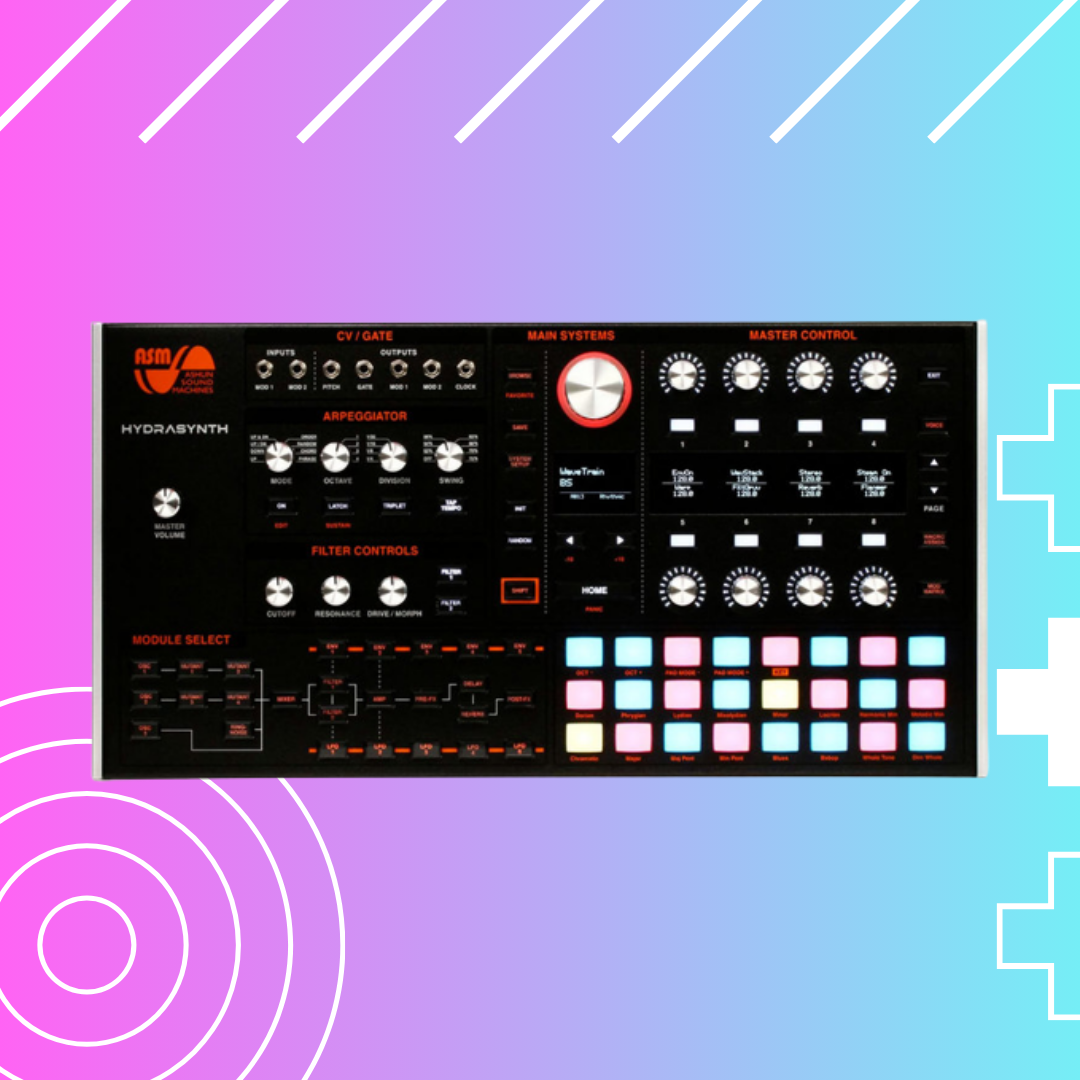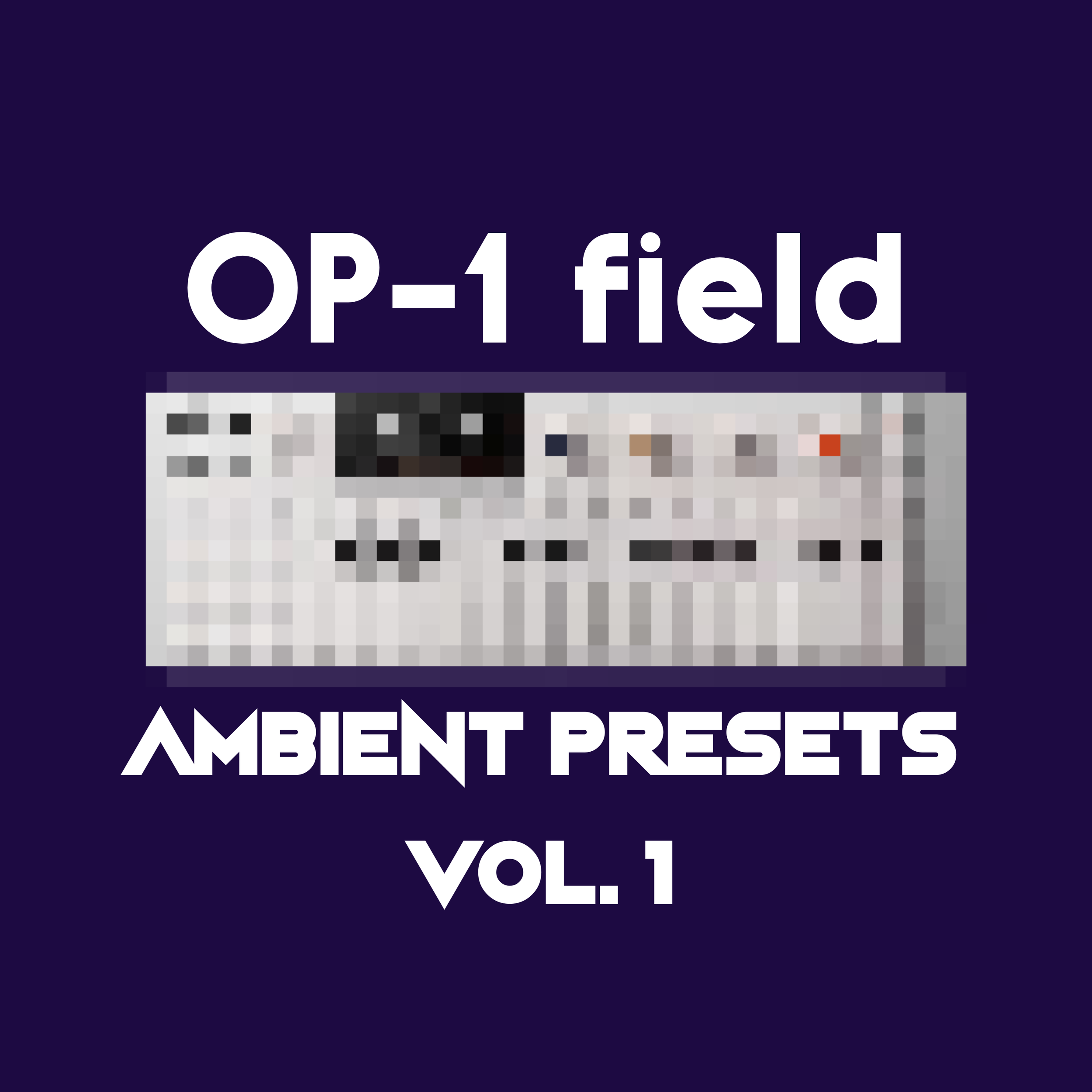Top 10 Synths under 1.000€ in 2023!
Our best picks for a somewhat budget synthesizer.
With new synthesizers being released every few months, it’s quite difficult to make a choice. There are lots of options with different specs, sounds, and form factors so you have to do thorough research before spending your hard-earned money. So today, we gathered our favorite synths that cost less than 1.000€ (prices may vary depending on the country). We tried to list a few “standard“ synthesizers but also some weirder ones to give you the full spectrum of what you can buy! They’re also listed by ascending price!
10. Roland JU-06A
Roland’s Juno 60 & 106 boutique module is still a great option for everyone who loves synths. It’s fully digital, made with Roland’s ACB technology, and has all the features a vintage Juno synth has with a few welcomed & modern additions. The “Juno sound“ is legendary and Roland's little boutique recreation certainly has all the mojo the vintage Junos had. Its only big downside is that the JU-06A is a 4-voice poly synth while the original Junos had 6 voices.
Specs:
Digital replica of the Juno-60 and Juno-106 synthesizers
4-Voice polyphony
Based on ACB technology
Switchable between Juno-60 / Juno-106 mode
Arpeggiator and 16-step sequencer
Chord memory function
Analog clock input (3.5 mm Jack)
Integrated USB audio interface: 24-bit / 44.1 kHz
DCO with sawtooth and pulse waveforms, sub-oscillator, and noise
Static high-pass filter
Resonant low-pass filter
LFO and ADSR envelope
Chorus and delay effect
9. Dreadbox Erebus Reissue
In contrast to JU-06A’s dreamy & lush pads, the Dreadbox Erebus Reissue is a raw, fully analog, and beefy monophonic synthesizer (it can also be duo-phonic) that is made for deep bass sounds and thick leads. Dreadbox is known for its massive-sounding synths and the Erebus is probably its best offering. The oscillators are amazing, the filter is, like in all Dreadbox synths, awesome, and it also has a very nice analog echo built in! Another huge plus of Erebus is that it’s a semi-modular module that can be used with your modular synthesizer and even be mounted in your Eurorack case.
Specs:
2 Oscillators with 2 waveforms each
Separate glide controls and hard sync function
2-Pole low-pass filter
ADSR envelope and an AR Amp envelope
Lo-Fi delay effect
18 Patch points
CV outputs: envelope, LFO, mod wheel, gate, CV1, CV2
CV inputs: Osc1, Osc2, Echo, Cutoff, CV, Gate, LFO Rate, PW, VCA
USB-powered (1.5 watts)
Can be used as a Eurorack module (42HP)
8. Teenage Engineering OP-Z
The OP-Z is a fully featured digital workstation that, like its big brother the OP-1, has lots of synth engines, sequencers, effects, and a sampler! You can use it to create full songs, drum sequences, and as a very powerful sequencer. It’s tiny, looking like a TV remote controller, and if you can live without a screen and memorize its functions and workflow, the OP-Z is an amazing instrument that won’t break the bank. While the OP-1 field costs around 2.000€, the OP-Z which shares a lot with the OP-1 costs only 500€. So, if you want to dip your feet into the Teenage Engineering world, the OP-Z is a great starting point!
Specs:
Fully-fledged digital workstation with synthesis parts, sequencer, effects, and video output
16 individual tracks for different synthesis forms and samplers
Innovative pattern sequencer with infinite pattern length and complex control options for each step
MIDI, CV, Trigger, Light and Motion Tracks
Stores up to 160 patterns
Modular and expandable effects technology
Output of pictures, videos, and animations
DMX light control and sequencing via an optional interface
6-axis motion sensor
51 Keys
4 High-resolution encoders
Pressure-sensitive pitch bender
Volume control
Integrated microphone
USB-C port
7. Korg MS-20 mini
Probably the oldest synth on our list, Korg’s mini version of the iconic MS-20 is a semi-modular, analog mono synth with a raw and fat sound. It’s a synthesizer that shines both in brutal, screaming basses and soft, rounder patches that you’ll quickly realize it’s not just a mono synth. The MS-20 mini is a vintage synthesizer that you can actually buy without spending thousands of Euros and it definitely deserves a place in your studio.
Specs:
37 Mini keys
Reproduction of the original analog circuitry
Structure: 2VCO / 2 VCA / VCF 2/2 EC / 1 LFO
Self-oscillating high-pass/low-pass filter with distortion
External signal processor (ESP)
Flexible patching system
Connections: Line output 3.5 mm mini jack, headphone output 3.5 mm mini jack, MIDI in, USB
6. IK Multimedia UNO Synth Pro X
IK Multimedia’s latest release is probably its best one so far. The UNO Synth Pro X may look like a digital synth but it’s not. It’s an analog paraphonic synthesizer with 3 oscillators and tons of features. It has all the things you’d ever want on a synth like 2 filters, envelopes, LFOs, a modulation matrix, a sequencer & arpeggiator, effects, and more! A very solid release that you don’t want to miss out on.
Specs:
Paraphonic analog synthesizer with step sequencer, arpeggiator, and effects section
3 Oscillators with PWM, sync, frequency, and ring modulation, also playable as legato, mono, paraphony, and bassline
Dual state-variable filter with 24 modes, including the original UNO Synth OTA filter and an SSI-based filter with self-oscillation
2 ADSR envelopes, both available as sources
2 LFOs with fade-in and retrigger options
16-Fold modulation matrix
64-step sequencer with real-time recording and 48 automation parameters
Arpeggiator with 10 modes
12 Effects in 3 slots: reverbs, delays, modulations including vintage chorus and vibrato
13 Editable scales
5. Arturia MiniFreak
At this point, it has become boring to include the MiniFreak or the MicroFreak on all our top-10 synth lists. But we can’t help but love these two synths. The MiniFreak is an upgraded version of the MicroFreak that has all the things you might missed. It has 6 voices of polyphony, multiple synth engines on two oscillators, an amazing modulation matrix, 3 effects slots, and it’s also stereo. Arturia has shown how you should do an upgrade on a successful product and the most important thing is that the MiniFreak is still a very affordable synth for the amount of features you’re getting. A must-have for everyone.
Specs:
37 Velocity-sensitive slim keys with aftertouch
6-Voice polyphony
Two digital sound engines per voice with 22 selectable oscillator modes: Superwave, Wavetable, Karplus Strong, Noise, and many more
Extensive modulation possibilities incl. FM, ring modulation, and mutual influence of the sound engines
Per voice: ADSR envelope, multi-segment envelope/ LFO, two LFOs, and analog multimode filter (low-pass, band-pass, high-pass)
Modulation matrix with 7 sources and 13 destinations
3 Effect slots (as insert or send effect) with 10 effect types
Performance arpeggiator with ratcheting and random functions
Step sequencer with 64 steps
Intuitive operation via OLED display and 40 knobs, encoders, and buttons
Memory for 256 factory presets and 256 user presets
Stereo line output: 2x 6.3 mm jack
4. Bastl Instruments Softpop SP2
Softpop by Bastl is a unique desktop module for the more experimental artists. It has a digital oscillator with 8 different waveforms, a multi-mode filter, and a scale quantizer. The beauty of the Softpop is its very refreshing architecture and design. At first glance, it doesn’t look like your typical mono synthesizer. It’s also semi-modular to connect to other gear and also self-patch to change the original routing giving you a ton of flexibility. Softpop’s philosophy and feature set is one of a kind so it will require a more in-depth analysis. Hopefully, we’ll be able to get our hands on one soon to do a full hands-on review!
Specs:
Digital oscillator with 8 waveforms and waveshaper
Pitch, Fine Tune, and Pitch Modulation controls
Scale quantizer for the oscillator with 8 selectable scales (freely programmable)
Multimode filter (lowpass, bandpass, highpass selectable) with controls for cutoff, resonance, cutoff modulation and FM through the oscillator
Output section with loopable AD envelope (adjustable via rate and scale)
Trigger button
Sample&Hold stage and VCA
Patchbay with 37 jack sockets (3.5mm)
Audio input with gain control for processing external signals
3. Moog Mother-32
As Moog’s future is highly uncertain, we’re still appreciating their amazing synthesizers for as long as we can. Mother-32 was the first synth with this form factor to be followed by DFAM & Subharmonicon. It is a very straightforward monophonic semi-modular synth with a beautiful-sounding VCO and a classic Moog Ladder Filter. A very simple design and concept that just works due to the quality of Moog’s products and can be further enhanced and used within a modular system. There’s not much more to say other than the Mother-32 is a top-notch quality synth for a beginner but also an experienced synth user!
Specs:
VC-controlled 32-step sequencer with 64 sequence-locations
Low pass & high pass Moog ladder Filter (20Hz-20kHz) with VC-controlled resonance
Moog oscillator with pulse and saw tooth wave outputs
MIDI input and MIDI to CV converter
32 Modular patch-bay with 5 patch-cables 3.5 mm mini jack
2 VC controlled mixer
Eurorack compatible
2. Pittsburgh Modular Taiga
We’re staying in the semi-modular category to present a very recent release by Pittsburgh Modular called Taiga. After Lifeforms which was a full synthesizer voice module, they decided to step it up a notch and release another fully featured synth that can be used standalone or as a module. Taiga is a fully analog synth with 3 oscillators, a multi-mode filter, an LFO, 2 envelopes, a mixer, and an analog delay where everything can be patched. It’s a powerhouse desktop synth that can be the core of your modular setup or a very capable synth of its own. It is a bit pricey but you’re getting a lot of synth for your money!
Specs:
Completely analog signal path
3 Oscillators, each with controls for pitch, FM, shape (sine, triangle, sawtooth, square), and waveshaper/wavefolder
Noise generator
4-Channel mixer
Adjustable preamplifier with overdrive circuit for external signal sources (gain: x30)
LFO with two waveforms (triangle and square) with a wide frequency range (41s - 500Hz)
Multimode filter (low-pass, band-pass, high-pass) with adjustable frequency and resonance, plus 2 CV inputs with attenuators, 2 ADSR envelopes
Dynamics controller, switchable between VCA and lowpass gate, with adjustable frequency/bias, resonance, and decay phase
Analog delay with adjustable delay time, feedback, and wet/dry mix
Built-in MIDI-to-CV/Gate interface
Further features: Arpeggiator, random sequencer, clock divider, clock generator with tap tempo, sample & hold, 2-channel mixer
CV inputs for all parameters and outputs for all individual sections
1. ASM Hydrasynth Desktop
Hydrasynth is a wave-morphing synthesizer with 8 voices of polyphony, two filters, and polyphonic aftertouch making it one of the most exciting and relatively affordable wavetable synths! Its digital nature and character give it such a wide palette of sounds you can get out of it without sacrificing the sound’s quality. Its interface is a bit complex and not what you’ve probably used to but once you get a hold of it, the Hydrasynth is capable of sounding like nothing else on this list.
Specs:
24 Touch- and velocity-sensitive pads
8 Voice polyphony - monotimbral
Fully polyphonic aftertouch
Arpeggiator includes Ratchet, Chance, Gate, and Swing (8 modes in total)
3 Oscillators with 219 single-cycle waveforms
WaveScan parameters for modulating via wavetables
Wavelist mode for blending up to 8 wavetables
8 Custom Wavelists per oscillator
Mixer includes Noise Generator and Ring Modulator
2 Filters: series or parallel
Filter 1 includes 11 different filter models (12 & 24 dB Ladder, Ladder Vintage, HP, LP, Vocal, etc.)
Filter 2: 12 dB (SEM-style) per octave, includes Continuous Sweep from lowpass, bandpass, up to highpass)
Modulation matrix
5 DAHDSR envelopes
5 LFOs
LFOs include Delay, Fade In, 3 Trigger Modes, Smoothing, Start Phase, One Shot Mode




